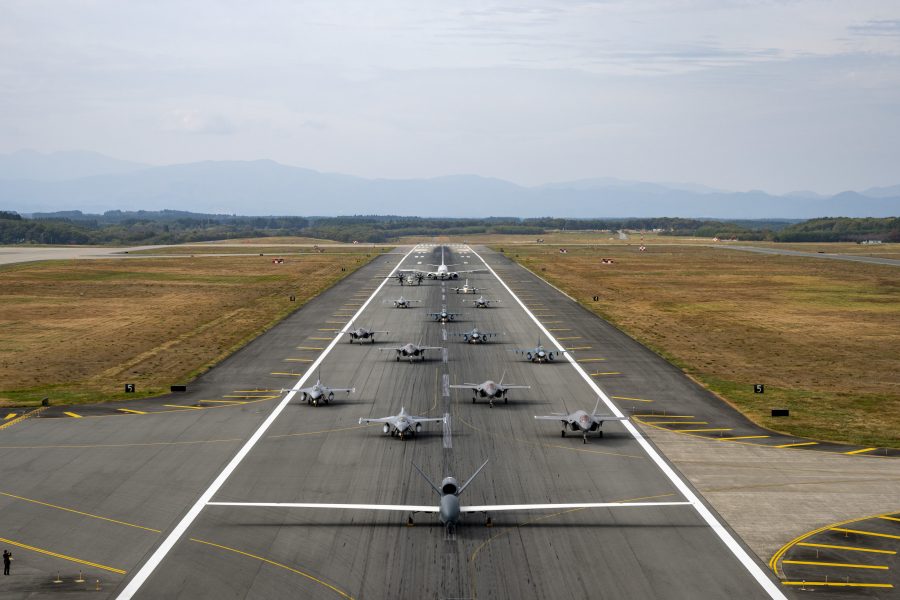The Air Force will rotate fighters through Misawa Air Base, Japan, as the U.S. begins to retire the F-16s now based there and the relocation of a permanent squadron of F-35s.
“The Aircraft will transition on a rotational basis,” a Pacific Air Force spokesperson told Air & Space Forces Magazine in response to questions. “These rotations ensure the continuation of our long-standing mission to defend Japan and maintain an open and free Indo-Pacific.”
USAF’s 35th Fighter Wing at Misawa will start drawing down its Fighting Falcons this summer, but won’t start receiving fifth-generation F-35s until spring 2026. Once complete, the wing will have given up 36 F-16s for 48 more capable F-35s. Misawa will be the Air Force’s second overseas base to host the stealth jets, following RAF Lakenheath in the U.K.
Misawa is charting a similar course to Kadena Air Base, Japan. Kadena’s 18th Wing began retiring its 48 F-15C/D Eagles in 2022 and expects the first 36 F-15EXs between March and June next year. In the interim, Kadena has hosted rotating interim forces, including F-15Es, F-16s, F-35s, and F-22s. Active-duty deployments usually last around six months, while Guard rotations are shorter, because they have to account for transition time on either end.

When the Pentagon first announced plans to retire its Kadena-based F-15C/Ds, some lawmakers voiced concerns about sustaining sufficient combat capability in the region, worrying that the move could send the wrong signal to both adversaries and allies alike.
The signals at Misawa are similarly mixed. The timeline for Misawa’s new F-35 wing to achieve full operational capability remains murky. At RAF Lakenheath, the 48th Fighter Wing was originally slated to to operate 52 F-35s across two squadrons. Four years later, just one squadron has achieved full operational capability; the other won’t be certified until this summer.
In Japan, relying on rotational forces does present some risk, said a former U.S. Forces Japan and Fifth Air Force commander, retired Lt. Gen. Bruce “Orville” Wright.
“These rotational forces belong to other combatant commanders, and they can be tasked by them at any time,” he said. “It’s a force that can be pulled between US Central Command and possibly European Command at a time when we’re facing a trilateral threat.”
J. Michael Dahm, a former Navy intelligence officer and senior fellow at Mitchell Institute for Aerospace Studies, acknowledged rotations can result in a “slight reduction” in combat capability due to turnover, but U.S. forces are built and trained to be able to manage such deployments.
“This has long been the case in the Middle East, where we’ve effectively fought wars without permanently stationing large forces in the region,” said Dahm. “The Indo-Pacific will be no different.”
The Air Force has not detailed its plans for Misawa’s F-16s, which could be put through a service life extension program for upgraded avionics, electronic warfare, and radar systems, which would keep them operational into the 2040s, transferred to the Air National Guard, or sent to the boneyard. The Pentagon recently transferred non-operational F-16s to Ukraine for parts.


